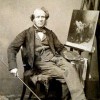Criminal Jurisdiction Act passed
22 Jun 1802
 An amendment of the Colonial Governors Act (1700), the Criminal Jurisdiction Act holds colonial officials accountable to the Court of King’s Bench in England for crimes committed in the colonies. Image: The Royal coat of arms of the United Kingdom of Great Britain and Northern Ireland.
An amendment of the Colonial Governors Act (1700), the Criminal Jurisdiction Act holds colonial officials accountable to the Court of King’s Bench in England for crimes committed in the colonies. Image: The Royal coat of arms of the United Kingdom of Great Britain and Northern Ireland.
Articles
Associated Places
Palace of WestminsterKingston
National Heroes Park
Morant Bay, Jamaica
Spanish Town
St. Ann Parish
Old Harbour
Porus









